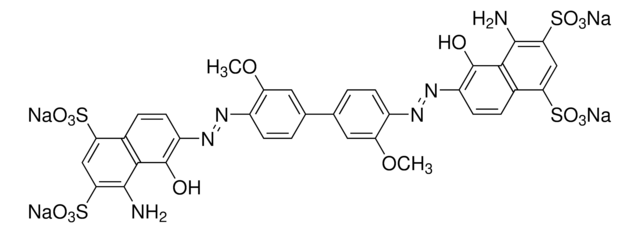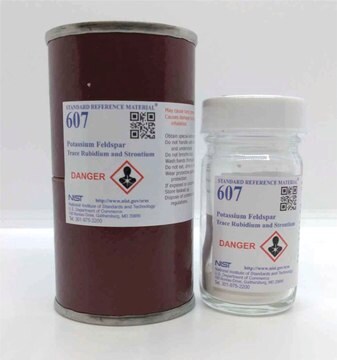D2535
Direct Blue 15
suitable for Histopaque® system, Powder
About This Item
Recommended Products
Product Name
Direct Blue 15, suitable for Histopaque® system, suitable for viability studies of collagenase-treated rat liver cells
description
suitable for Histopaque® system
Quality Level
form
powder
composition
Dye content, ~44%
color
dark blue
solubility
water: 10 mg/mL, clear, blue
suitability
suitable for viability studies of collagenase-treated rat liver cells
application(s)
diagnostic assay manufacturing
hematology
histology
storage temp.
room temp
SMILES string
[Na+].[Na+].[Na+].[Na+].COc1cc(ccc1N=Nc2c(O)c3c(N)cc(cc3cc2S([O-])(=O)=O)S([O-])(=O)=O)-c4ccc(N=Nc5c(O)c6c(N)cc(cc6cc5S([O-])(=O)=O)S([O-])(=O)=O)c(OC)c4
InChI
1S/C34H28N6O16S4.4Na/c1-55-25-9-15(3-5-23(25)37-39-31-27(59(49,50)51)11-17-7-19(57(43,44)45)13-21(35)29(17)33(31)41)16-4-6-24(26(10-16)56-2)38-40-32-28(60(52,53)54)12-18-8-20(58(46,47)48)14-22(36)30(18)34(32)42;;;;/h3-14,41-42H,35-36H2,1-2H3,(H,43,44,45)(H,46,47,48)(H,49,50,51)(H,52,53,54);;;;/q;4*+1/p-4
InChI key
OLSOUGWNONTDCK-UHFFFAOYSA-J
Looking for similar products? Visit Product Comparison Guide
Application
Legal Information
Signal Word
Danger
Hazard Statements
Precautionary Statements
Hazard Classifications
Carc. 1B
Storage Class Code
6.1C - Combustible acute toxic Cat.3 / toxic compounds or compounds which causing chronic effects
WGK
WGK 3
Flash Point(F)
Not applicable
Flash Point(C)
Not applicable
Choose from one of the most recent versions:
Certificates of Analysis (COA)
Don't see the Right Version?
If you require a particular version, you can look up a specific certificate by the Lot or Batch number.
Already Own This Product?
Find documentation for the products that you have recently purchased in the Document Library.
Customers Also Viewed
Our team of scientists has experience in all areas of research including Life Science, Material Science, Chemical Synthesis, Chromatography, Analytical and many others.
Contact Technical Service













